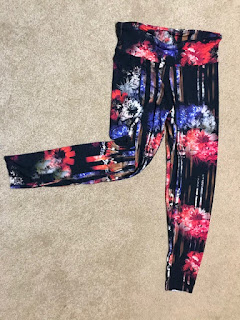A dependable pattern for leggings has been on my to-do list for a while. I've made them for the grandgirls but never for me. And I like to wear them with dresses. Someone (wish I could remember who) on IG recommended the Avery leggings by Helen's Closet I finally purchased the pattern.
Unfortunately it is a PDF pattern. So it sat in unexamined on my tablet for a bit.
I've also intended to try sending PDF patterns out for printing for a while. I don't mind printing on my home computer and taping together. Much. But DH reminded me that is not exactly free. So now I'm a veteran (5 downloaded patterns) of pdfplotting.com
It is reasonably priced though not instantly gratifying. It takes about a week to arrive, so not too bad. I have found that I optimize the shipping costs with 2-3 patterns. It depends on the number of pages needed.
It arrives in a triangular cardboard tube that protects the pages. The pages are sturdy and easier to manage than taped pages, I think.
I am impressed with this pattern. The instructions for sewing the waistband and waistband facing include a slight off-set to cut down on bulk. The waistband is very wide, with elastic attached to the seam allowance between the waistband and facing. It calls for 1/2" elastic. I had 3/8" and 5/8" on hand so I tried both. Both were fine.
The pattern has no side seam and it has a crotch gusset. The only ever-so-slightly tricky part is to remember to mark the dots so that the gusset installation doesn't end up with a wad in the wrong place. You can barely see my tailors tacks above. Notches are fairly important too so that you don't install the waistband upside-down.
The front waist is way lower than the back and yet fits surprisingly well.
There are two views in the pattern. I prefer the one with the lower waistband and shorter length. I started out with the high-waisted version and found that it was way too high on me, almost to my bra band. For reference, I'm almost 5'5" and shrinking. I removed this waistband and replace it with another knit in stash, the mustard color. It was almost too tight then. That's when I got serious about measuring the amount of stretch in a knit before cutting it.
I knew my knit fabrics had nowhere near 70% stretch in any direction and so traced the next size up from my measurements. None of my knit fabric is precious so I figured, why not? Frankly, I'm not sure how those prints came to be in stash! And it only takes a yard.
I found 3 pieces of knit in stash to try. Two were rayon jersey. The striped one is 95% cotton and 5% elastane. They each measured about 30-40% in all directions. And they were fine, given that I went up a size. I'm sure they would have been too tight otherwise.
I'm quite pleased with these. They will likely spend more time as PJ pants than as leggings to wear outside. That's primarily because I need PJ pants.
The directions also make it clear that a narrow zigzag is necessary. I used polyester thread and they are very secure and stretch enough.
DH actually thought I purchased the first pair, so that was nice. He noted that some ladies wear these as pants. Well, not me.
After making 3, I think I'm over leggings for a while. But maybe not. Comfort is still high priority during the great pause.













































